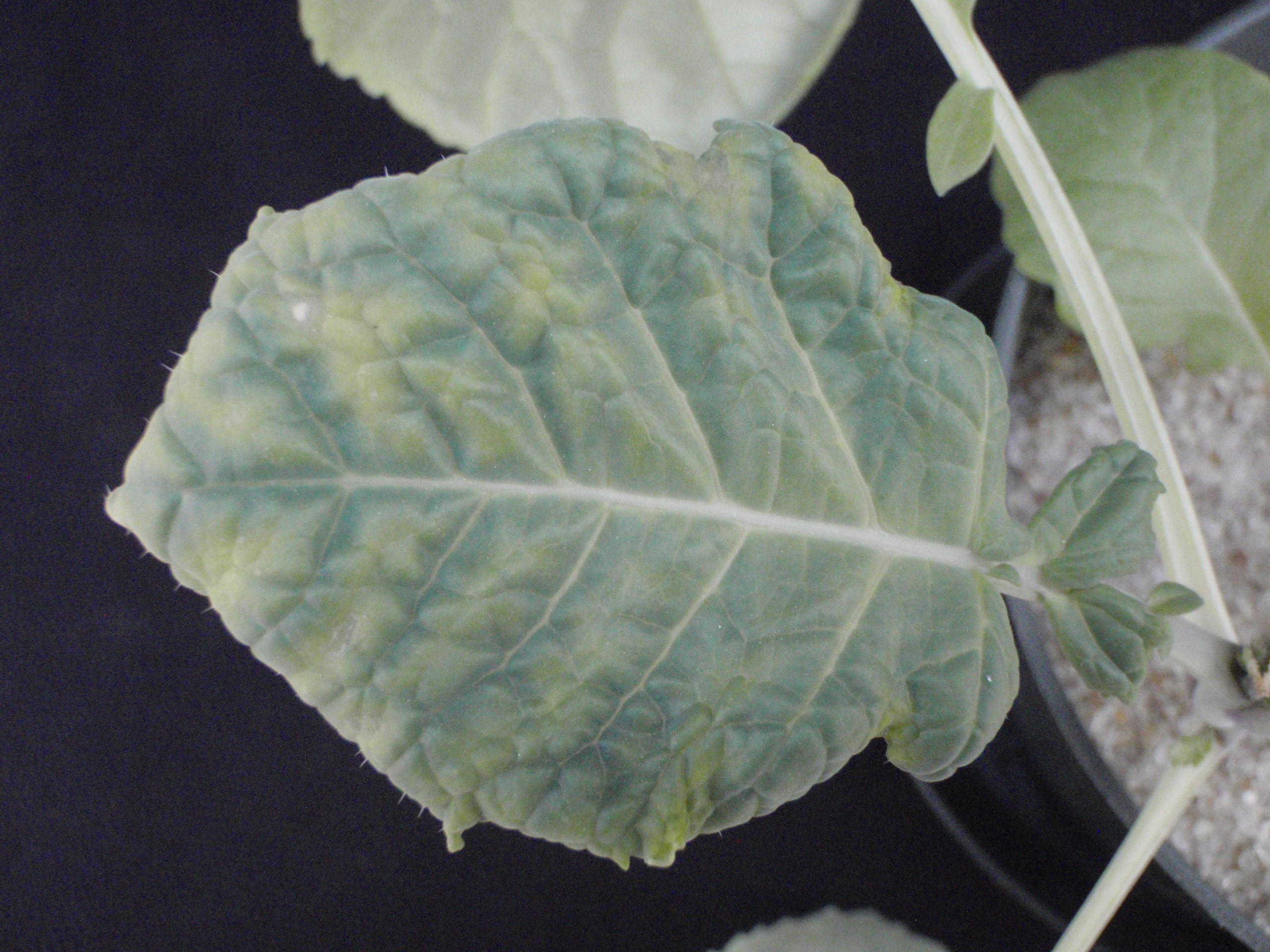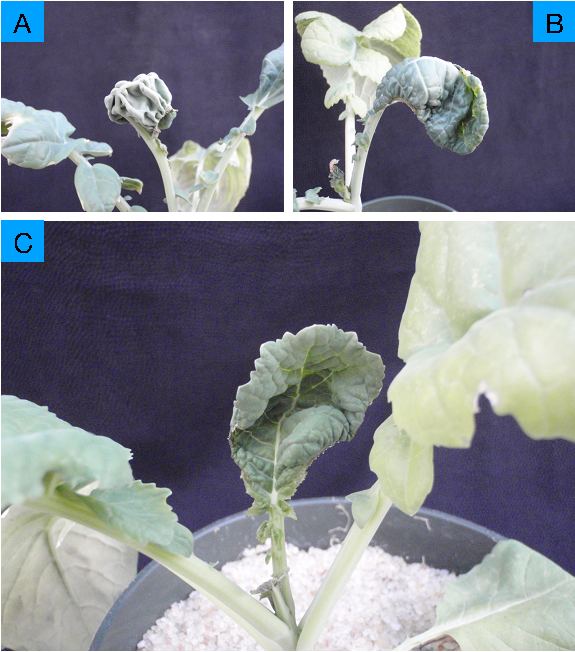Potassium Deficiency of Carinata
go.ncsu.edu/readext?518696
en Español / em Português
El inglés es el idioma de control de esta página. En la medida en que haya algún conflicto entre la traducción al inglés y la traducción, el inglés prevalece.
Al hacer clic en el enlace de traducción se activa un servicio de traducción gratuito para convertir la página al español. Al igual que con cualquier traducción por Internet, la conversión no es sensible al contexto y puede que no traduzca el texto en su significado original. NC State Extension no garantiza la exactitud del texto traducido. Por favor, tenga en cuenta que algunas aplicaciones y/o servicios pueden no funcionar como se espera cuando se traducen.
Português
Inglês é o idioma de controle desta página. Na medida que haja algum conflito entre o texto original em Inglês e a tradução, o Inglês prevalece.
Ao clicar no link de tradução, um serviço gratuito de tradução será ativado para converter a página para o Português. Como em qualquer tradução pela internet, a conversão não é sensivel ao contexto e pode não ocorrer a tradução para o significado orginal. O serviço de Extensão da Carolina do Norte (NC State Extension) não garante a exatidão do texto traduzido. Por favor, observe que algumas funções ou serviços podem não funcionar como esperado após a tradução.
English
English is the controlling language of this page. To the extent there is any conflict between the English text and the translation, English controls.
Clicking on the translation link activates a free translation service to convert the page to Spanish. As with any Internet translation, the conversion is not context-sensitive and may not translate the text to its original meaning. NC State Extension does not guarantee the accuracy of the translated text. Please note that some applications and/or services may not function as expected when translated.
Collapse ▲From the Field – Agronomy Notes
In this Brassica carinata (Ethiopian Mustard) research update, we highlight the symptoms of potassium deficiency. These images are part of a project by the Southeast Partnership for Advanced Renewables from Carinata (SPARC) to develop a diagnostic series for the identification of nutrient disorders of Carinata. Carinata is an exciting new crop in the Southeast used for a wide variety of primary and secondary agricultural products including cover crops, feedstock, high protein meal, and jet fuel. It is similar in management to canola given both canola and carinata are winter annual Brassica oilseed crops. However, carinata oil is not edible.
Diagnostic Information:
Potassium (K) is one of the three core macronutrients, and consequently, deficiency symptoms will manifest rapidly. Potassium is a mobile element, which means it will translocate from mature tissues to the younger tissue where it is needed. As such, deficiency symptoms will develop first on the lower foliage as the potassium moves from the older, lower foliage to the newer, upper foliage.
In Carinata, potassium deficiency will first manifest as an overall stunting of the plant when compared with a normal, healthy carinata. The next stage of potassium deficiency manifested as two distinct symptomology progressions based on cultivar. These two symptomology progressions both developed in unique ways and will be discussed individually as they progressed.
The least common symptomological progression manifested on the lower foliage as epidermal cracking of the cuticle especially along the midrib (Fig. 1 a). This cracking was accompanied with the onset of sunken, tan to slightly discolored green potions that manifested on and around the midrib (Fig. 1 b).
The other early potassium deficiency progression was more common. This symptomological progression started as forest green slightly sunken regions of the plant surface (Fig. 1 c). These regions had a very mild textural ruffling.
For the sunken tan spotting symptom track, the next symptomolgical progression was the increasing of the tan margins along the leaf’s surface (Fig. 2 a). For the forest green regions, the discolored regions also expanded but manifested as yellowing regions rather than tan regions (Fig. 2 b). As symptoms progressed, the tan regions eventually became necrotic forming regions which could be punched out, leaving a hole. The forest green symptomology continued to yellow and expand especially along the midrib and interveinal regions (Fig. 3).
The advanced stages of potassium deficiency manifested as large regions of necrosis for both the tan symptomology track and the forest green track (Fig. 4). In addition to these necrotic regions, the new growth of the potassium deficient plant showed severe signs of distortion often resulting in horribly twisted leaves (Fig. 5). The final stage of deficiency manifests as complete necrosis and abscission of the lower leaves. To ensure proper diagnosis the above material should be used in conjunction with a leaf tissue sample and/or field test.

Figure 1 – In the three pictures above, you can see beginning of potassium deficiency as a general paling of the leaf surface. In figure 1 a, note the epidermal cracking of the cuticle along the midrib. These cracked areas appeared as slightly sunken zones along the midrib which took on a light tan color (figure 1 b). In other plants, the coloration of these sunken regions ranged from slight tan to a slight forest green coloration (figure 2 c). ©2018 Forensic Floriculture

Figure 2 – The next symptoms of potassium deficiency manifested as the increase of size and color development of the sunken regions. In figure 2 a, you can see the sunken tan regions expanded and combined to create large tan regions. In figure 2 b, the forest green spots have expanded and taken on a yellow coloration. ©2018 Forensic Floriculture

Figure 3 – As symptoms progressed, the subtle differences between the dual symptomology of the tan sunken regions and the forest green regions developed further. In the tan, sunken margins progressed to necrotic regions which could be punched out or fall out resulting in a hole. The forest green regions, also progressed in symptomology. These regions turned yellow and were most developed around the margin and in the interveinal regions. ©2018 Forensic Floriculture

Figure 4 – In the advanced stages of potassium deficiency, both the tan sunken regions and the forest green spots progressed to necrotic regions along the surface and margin of the lower leaves.

Figure 5 – In advanced stages of potassium deficiency, the new growth of the plants experienced sever distortions and contortions. These new leaves would distort and fold on themselves sometimes resulting in the leaf turning completely inside out. ©2018 Forensic Floriculture
We would like to thank the following for grant assistance on this project:



Key Contact Central East:
Dr. Angela Post, NC State Univ. Department of Crop and Soil Sciences – angela_post@ncsu.edu
Dr. Carl Crozier, NC State Univ. Department of Crop and Soil Sciences – ccrozier@ncsu.edu
Key Contact South East:
Dr. Michael Mulvaney, UF/IFAS West Florida Research and Education Center – m.mulvaney@ufl.edu
Primary Authors: Paul Cockson, Dr. Carl Crozier, Dr. Ramon Leon, Dr. Michael Mulvaney, Dr. Angela Post, and Dr. Brian E. Whipker
Project Team: NC State Univ. personnel Paul Cockson (NC State B.S. student in Agroecology), Ingram McCall (Research Technician in Horticultural Science at NC State), Dr. Carl Crozier (Professor and Extension Specialist at NC State), Dr. Ramon Leon (Assistant Professor at NC State), Dr. Angela Post (Assistant Professor and Extension Specialist NC State), and Dr. Brian Whipker (Professor of Floriculture and Plant Nutrition in Horticultural Science at NC State). Univ. of Florida personnel Dr. Michael Mulvaney (Cropping Systems Specialist at UF/IFAS West Florida Research and Education Center.
Suggested Citation:
Cockson, P.1, C. Crozier1, R. Leon1, M. Mulvaney2, A. Post1, B. Whipker1. 2018. Nitrogen Deficiency of Carinata. North Carolina St. Univ. Small Grains Portal – From the Field-Agronomy Notes.
1North Carolina State University
2University of Florida
Funding and Acknowledgments:
Funding for this work/study was received through USDA-NIFA Bioenergy Coordinated Agricultural Project (CAP). This material is based upon work that is supported by the National Institute of Food and Agriculture, U.S. Department of Agriculture.





